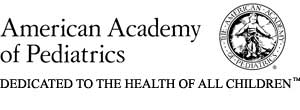

Keep your child in a car safety seat with a full harness or belt-positioning booster seat for as long as possible. When your child is big enough, make sure the seat belts in your vehicle fit your child correctly. The shoulder belt should lie across the chest, not the neck or throat. The lap belt must be low and snug across the thighs, not the stomach. In addition, the child should be tall enough to sit against the vehicle seat back with her legs bent at the knees and feet hanging down. Seat belts are made for adults. If the seat belt does not fit your child correctly, she should stay in a booster seat until the adult seat belt fits. This is usually when the child reaches about 4' 9" in height and is between 8 to 12 years of age.
Other points to keep in mind when using seat belts include the following:
The recommendations in this statement do not indicate an exclusive course of treatment or serve as a standard of medical care. Variations, taking into account individual circumstances, may be appropriate.